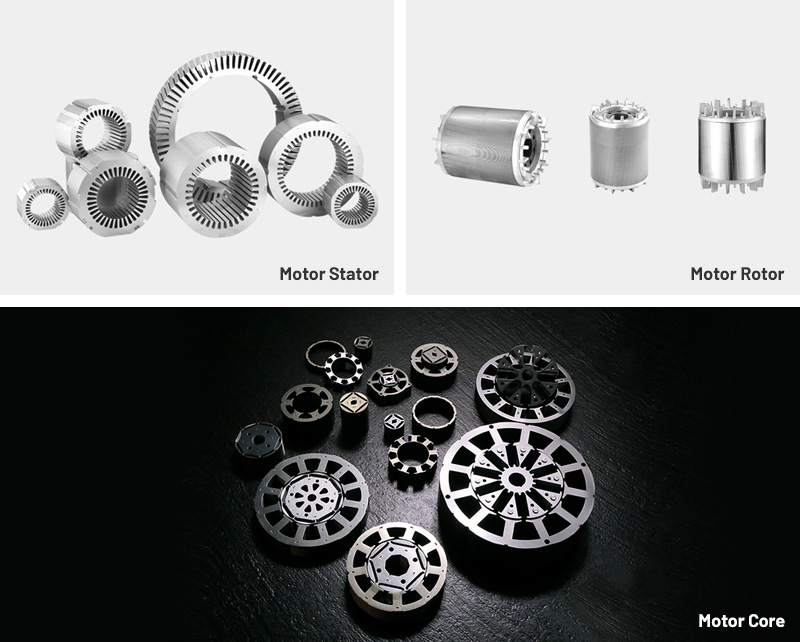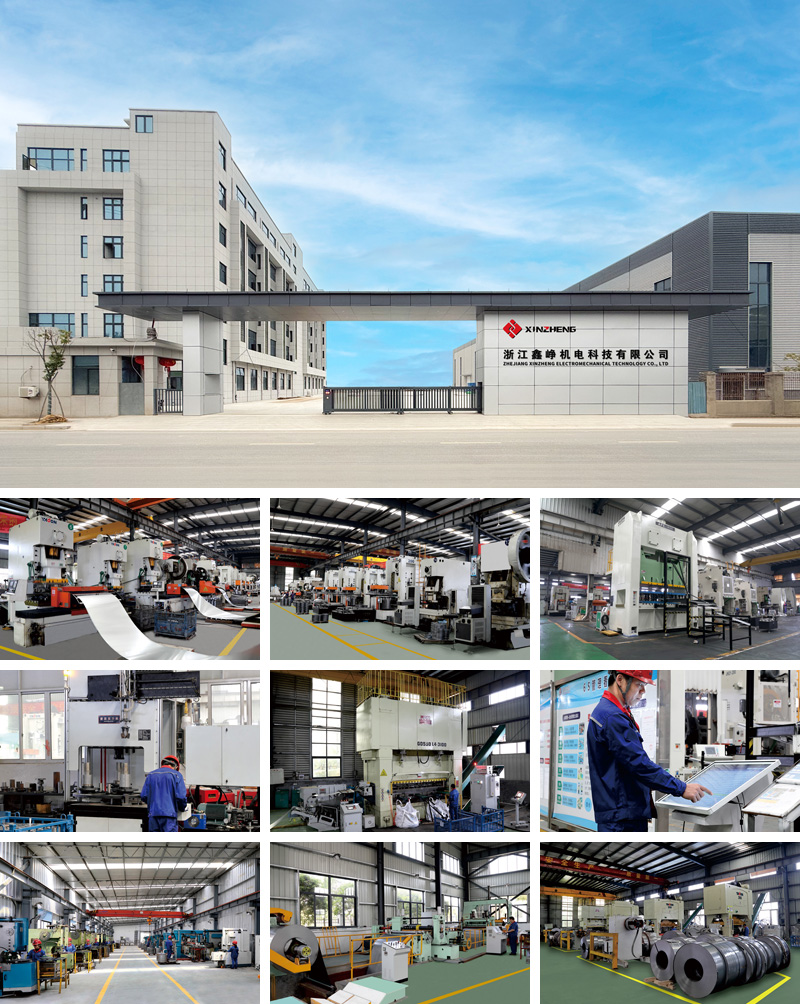The industrial and automotive sectors are experiencing a surge in demand for high-efficiency, high-power-density electric motors. As electric vehicles, renewable energy systems, and industrial automation proliferate, motor cores are expected to perform reliably under increased mechanical, thermal, and electromagnetic stresses. Standard motor laminations can deform during high-speed operation, assembly, or under extreme load conditions, leading to reduced magnetic performance, increased noise, and shortened motor lifespan.
High-strength, deformation-resistant motor laminations address these challenges by combining enhanced mechanical robustness with precise magnetic performance. They are essential in applications where dimensional stability, low core losses, and long-term operational reliability are critical. Markets such as electric vehicle traction motors, industrial drives, compressors, and renewable energy generators are particularly sensitive to the quality of motor laminations. As efficiency regulations tighten globally, motor manufacturers increasingly prioritize laminations capable of withstanding mechanical deformation while maintaining optimal magnetic properties.
Motor laminations form the core of both stators and rotors in AC and DC motors. Each lamination is a thin sheet of electrical steel, insulated from adjacent layers, designed to reduce eddy current losses while guiding magnetic flux efficiently. In high-speed or high-load applications, laminations are subject to mechanical forces that may cause bending, warping, or other deformations. These deformations can disrupt magnetic alignment, increase air-gap inconsistencies, and lead to localized heating, higher hysteresis losses, or even failure.
High-strength, deformation-resistant laminations leverage two core engineering principles:
Material Engineering: Using high-quality silicon steel or advanced soft magnetic alloys with tailored mechanical properties ensures laminations resist bending and warping. The addition of alloying elements, such as chromium or nickel, can further enhance tensile strength without compromising magnetic performance.
Structural and Process Optimization: Precision stamping, stress-relief annealing, and optimized stacking methods reduce residual stress and maintain lamination flatness. Insulation coatings must also adhere consistently under mechanical and thermal stress to prevent short circuits between laminations.
By integrating these principles, deformation-resistant laminations ensure that motors maintain efficiency, reduce vibration and noise, and deliver reliable performance throughout their operational lifecycle.
High-strength, deformation-resistant laminations are typically produced from:
Electrical Steel (Silicon Steel): Standard grades with 2.5–3.5% silicon content provide high resistivity, reducing eddy current losses while retaining magnetic permeability.
Advanced Alloys: For applications requiring extreme mechanical or thermal stability, nickel-iron or iron-cobalt alloys can be used, offering higher saturation flux density and improved mechanical properties.
Insulation Coatings: Each lamination is coated with a heat- and mechanically-resistant insulation layer to prevent inter-lamination currents. In high-strength laminations, these coatings are formulated to resist cracking, delamination, and wear during stacking or operation.
Laminations are designed to minimize stress concentration while maintaining a uniform magnetic path. Precision stamping or laser/EDM cutting produces complex geometries with minimal burrs, while proper edge finishing reduces mechanical stress points. The stacking and clamping process ensures consistent air gaps and alignment, crucial for both efficiency and mechanical integrity.
Key performance characteristics include:
Mechanical Robustness: Resistance to bending, warping, and compression during assembly and operation.
Magnetic Stability: Low hysteresis and eddy current losses across operational temperature ranges.
Dimensional Precision: Tight tolerances for stack height, tooth width, and overall geometry, ensuring uniform air gaps and reduced vibration.
Cold Rolling: Silicon steel coils are rolled to precise thicknesses.
Insulation Application: Coatings are applied and cured to ensure adhesion and thermal resistance.
Stamping or Cutting: Progressive dies, laser, or EDM cut laminations with high precision.
Stress-Relief Annealing: Laminations undergo heat treatment to relieve residual stresses and stabilize grain structure.
Stacking and Clamping: Laminations are assembled into cores with accurate alignment, minimizing deformation during final motor assembly.
Several critical factors affect the performance of high-strength, deformation-resistant laminations:
Material Purity and Alloy Composition: Impurities or inconsistent alloy content can reduce tensile strength or magnetic permeability.
Insulation Quality: Coating cracks or peeling can lead to short circuits, localized heating, or performance degradation.
Precision in Cutting and Stacking: Misaligned or uneven laminations increase air-gap variation and reduce efficiency.
Annealing and Heat Treatment: Proper thermal processing ensures residual stresses are relieved and magnetic properties are optimized.
Mechanical Handling: Laminations must be handled carefully during transport and assembly to prevent deformation before motor assembly.
Selecting a reliable supplier is critical for ensuring consistent lamination quality:
Material Certification: Suppliers should provide detailed material specifications, including silicon content, tensile strength, and magnetic properties.
Process Transparency: Documentation of stamping, heat treatment, and insulation application ensures process consistency.
Quality Control: Inspection protocols for dimensional accuracy, coating integrity, and mechanical robustness are essential.
Production Capacity: The ability to deliver large-scale, consistent batches is vital for OEMs.
Compliance: Suppliers should meet relevant industrial standards and provide test data demonstrating performance under mechanical and thermal stress.
Even with advanced materials and processes, several challenges persist:
Cost: High-strength, deformation-resistant laminations require premium materials, precision manufacturing, and stringent quality control, increasing production costs.
Manufacturing Complexity: Thin, high-strength laminations may be difficult to stamp or cut, increasing tooling wear and scrap rates.
Thermal and Mechanical Trade-offs: Balancing mechanical strength with magnetic performance and manufacturability is a complex engineering task.
Supply Variability: Differences between suppliers in alloy consistency, coating quality, and heat-treatment can lead to performance variability in finished motors.
High-strength, deformation-resistant laminations are particularly valuable in applications where motors experience mechanical stress, high rotational speeds, or thermal cycling:
Electric Vehicle Traction Motors: Compact, high-power motors in EVs require laminations that maintain flatness and magnetic performance under vibration and load.
Industrial Drives: Motors driving pumps, compressors, and machine tools operate under heavy loads and require laminations that resist deformation.
Renewable Energy Generators: Wind turbine and hydroelectric generators experience high torque variations; robust laminations improve reliability.
High-Speed Motors: Motors in automation and robotics applications rely on precise laminations to minimize vibration, noise, and core losses.
HVAC and Air Handling Systems: Motors in continuous operation at elevated temperatures benefit from laminations that retain both magnetic and mechanical integrity.
The motor industry continues to evolve, pushing the boundaries of lamination materials and manufacturing techniques:
Advanced Alloys: Research into nickel-iron and iron-cobalt alloys offers higher mechanical strength and improved magnetic performance.
Enhanced Coatings: Inorganic and hybrid coatings resistant to mechanical wear and thermal cycling extend lamination lifespan.
Precision Manufacturing: Laser cutting, EDM, and automated stacking reduce burrs, improve alignment, and enhance mechanical robustness.
Integration with Thermal Management: High-strength laminations combined with advanced cooling strategies allow for compact, high-efficiency motor designs.
Global Standardization: As EVs, industrial drives, and renewable energy systems expand globally, standardized lamination specifications ensure consistent quality across suppliers and geographies.
Q: What makes a lamination “deformation-resistant”?
A: The combination of high-strength alloy selection, precision stamping, stress-relief annealing, and robust insulation coatings ensures the lamination maintains shape and mechanical integrity under operational stress.
Q: Can standard silicon steel laminations be used for high-stress motors?
A: Standard laminations may deform under mechanical load or vibration. High-strength, deformation-resistant laminations are specifically engineered to maintain both structural and magnetic performance under these conditions.
Q: How does lamination deformation affect motor performance?
A: Deformation can alter the air gap, reduce magnetic alignment, increase eddy current losses, generate noise, and shorten motor lifespan.
Q: Are high-strength laminations more expensive?
A: Yes, due to premium materials, precision manufacturing, and additional quality control steps. However, they often provide lower total cost of ownership by enhancing motor efficiency, reliability, and longevity.
High-strength, deformation-resistant motor laminations are critical components for modern motors facing mechanical, thermal, and electromagnetic challenges. By combining advanced materials, precision manufacturing, and robust insulation systems, these laminations ensure structural stability, consistent magnetic performance, and extended motor life. Industries from electric vehicles to renewable energy, industrial automation, and high-speed machinery increasingly rely on these laminations to meet performance, efficiency, and reliability demands.
As material science and manufacturing technologies advance, high-strength laminations are becoming more efficient, precise, and cost-effective, positioning them as an essential component in the next generation of high-performance motors.
Product Category

Comprehensive Strength


Copyright © Zhejiang Xinzheng Electromechanical Technology Co., Ltd. All Rights Reserved.
This website uses cookies to ensure you get the best experience on our website.